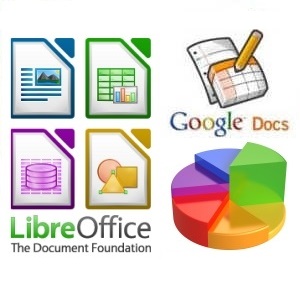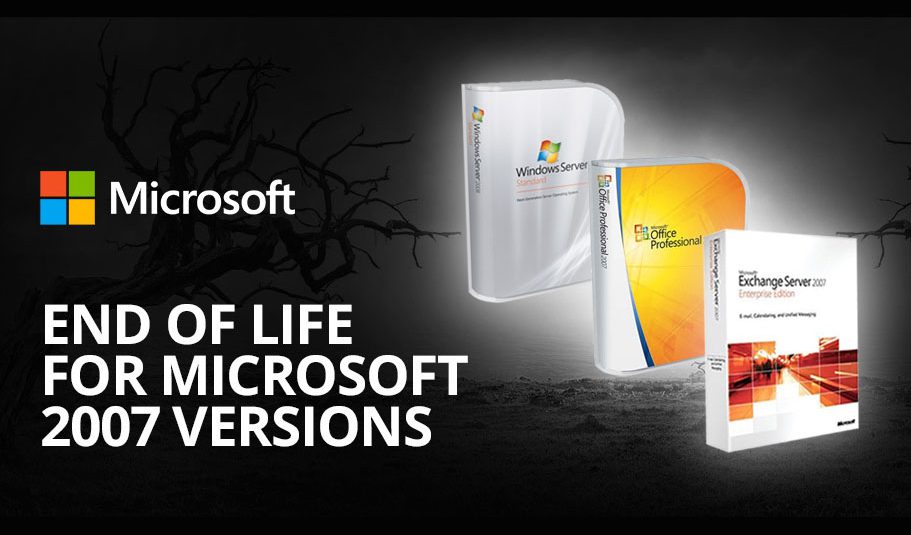In July each year, when you are reviewing your business budget for the year ahead, it is a great time to review your technology and factor the cost increase or savings into your business budget.
Read MoreAfter retiring Picasa from further development in 2016, Google announced in March that the desktop photo-editing program would no longer work to upload or download photos, or manage online albums. Similar programs do exist, but they may not have quite the same suite of editing tools and easy online album-sharing capabilities as the free Picasa software. To help narrow your options, make a list of the features you used the most and then try to find a replacement that matches up best with the Picasa toolbox.
Google Photos — the service that replaced Picasa in the company’s free software lineup — might be the easiest move for your files, as your Picasa Web Albums are most likely there already thanks to Google’s transition from the old program to the new one. You just need to log in at photos.google.com with the same Google Account name and password you used for Picasa. Google Photos can back up pictures on your computer to server space online, and you can order printed books of your pictures online. Still, some may find the photo-editing tools more limited than those offered in Picasa.

If “free” is the right price for you, but you want more editing and retouching controls, the photo programs made by Apple and Microsoft may suffice. In addition to cropping and color-adjustment tools, Photos for the Mac and Microsoft Photos for Windows 10 can fix the red-eye look caused by a camera flash, organize pictures with tags, share online albums and smooth over imperfections within the image.
The cross-platform, open-source GIMP (GNU Image Manipulation Program) software is another versatile photo-editing program, but might be a little more technical than some entry-level applications. If it piques your interest, GIMP has an online user manual you can browse before downloading.
The Flickr picture-sharing site, recently acquired by SmugMug, offers photo editing tools, a terabyte of free storage space and a service to print photo books.
For those who want robust editing and album-management features and don’t mind paying, ADSee Photo Studio (versions starting at $60) and Adobe Photoshop Elements ($100) are two programs to consider. Each has a free trial to download so you can sample the software before buying it. Although the learning curve can be steep, Adobe’s Creative Cloud Photography plan includes the industry-standard Adobe Photoshop CC and Adobe Lightroom CC for $10 a month.
Not all photo-editing programs include the ability to directly order prints online. When you need physical copies of your pictures to share, you can export the edited images from your photo program and upload them to the website of an online printing service like Adorama Pix, Nations Photo Lab, Shutterfly or Snapfish. Some drugstore sites (CVS, Walgreens and so on), also offer online photo ordering, and some pharmacies have photo printers in the store you can use to print out flash drives full of pictures.
In a survey of 4,500 enterprise decision-makers, collaboration accounted for more than 1/3 of the success or failure of a company’s business performance.1 Collaboration is just as important, if not more so, for small businesses. But are the tools too hard to use or too expensive for a small business that mainly needs to collaborate with people outside of an office environment or outside their own organisation? Not so if you are making the most of Office 365.
Today’s workforce expects their tools to deliver the capabilities they need to stay productive and efficient. If a business doesn’t provide these tools then they will download and use their own, whether it be on the work computer, personal laptop, or smart phone. However, a mismatch of unintegrated tools is a recipe for not collaborating fully. This is not the case if you are making the most of Office 365. The integrated Office 365 suite delivers what businesses need – scalability, easy implementation and advanced security – as well as flexible, user-friendly tools that help employees generate great results for their business.
For example, you have a small internal team who is partnering on a project with interstate contractors. They use SharePoint to manage the project and store all the files and they stay in close touch with weekly Skype calls and daily Yammer conversations; all integrated tools within the Office 365 suite.
1 Frost & Sullivan. Press Release: “Frost & Sullivan Unveils Groundbreaking ROI Tool That Guarantees Better Business Performance,” December 8, 2015
With every latest update in a product or a new product, Microsoft ends the previous product. This year, it is the End of Life for Office 2007. It is nothing but Microsoft will end the support for Office 2007 on October 10, 2017. Hence, Microsoft advises all the current users of Office 2007 to upgrade Office 365 or ProPlus. Microsoft has published a complete guide on the roadmap of End of Life for Office 2007 and also how to upgrade it to Office 365 and Office 365 ProPlus.
End of Life for Office 2007
End of Life for Office 2007 is nothing but the end of support for this product by Microsoft. Hence, users will not receive any patches or updates for Office 2007 after October 10, 2017. As a result, using Office 2007 may leave users’ computers vulnerable to errors as well as security threats.
Most of the Microsoft products have a support lifecycle of 10 years. Thus, Office 2007 too received new features, bug fixes, security fixes and various other updates during these 10 years. The end of this lifecycle is typically known as End of Life. The End of Life for Office 2007 will be October 10, 2017.
After the End of Life for Office 2007, Microsoft will not provide:
- Technical support for issues
- Bug fixes for issues that are discovered
- Security fixes for vulnerabilities that are discovered
Besides this, currently, there are several Outlook 2007 clients that are using Office 365. From October 31, 2017; these clients too won’t be able to connect to Office 365 mailboxes. Hence, Outlook 2007 clients using Office 365 will not be able to receive and send mail.
So what should you do?
Before the End of Life for Office 2007, users are recommended to follow one of these steps:
- Upgrade to Office 365 ProPlus, the subscription version of Office that comes with many Office 365 plans.
- Upgrade to Office 2016, which is sold as a one-time purchase and available for one computer per license.
- Upgrade to an earlier version of Office, such as Office 2013.
As Microsoft mentions, Office 365 is the subscription plan that includes access to Office applications and other cloud services, including Skype for Business, Exchange Online, and OneDrive for Business. On the other hand, Office 365 ProPlus is the version of Office that comes with many Office 365 plans. It includes the full versions of Word, PowerPoint, Excel, Outlook, OneNote, Publisher, Access, and Skype for Business installed on your client computers. As the End of Life for Office 2007 is nearing and only a couple of months are left, users are advised to upgrade as soon as possible.
The Outlook 2016 user interface hasn’t changed much, but it has some great new features. For example, when attaching a file to an email, you’ll get the option to copy it to the cloud. This not only makes it easier to find in the future, it also means that people can collaborate on one version of a file instead of constantly sending each other updates.
Outlook also has a new email filtered category called Clutter, which intelligently tries to identify messages that might not be spam, but still rate low on your importance radar.
For Word users, you now have the ability to use “Live Typing” – watching colleagues collaborate on a shared Word document before your very eyes!
Word 2016 also features “Tell me”, a new way to find the exact button you’re looking for, without having to plow int the settings. A bit like Clippy in Word98, only less annoying!
PowerPoint 2016 now has a full range of editing tools, making it easier than ever to develop a visual style that suits your subject matter.
Excel is better at integrating new data. Microsoft has tweaked Excel 2016 to be more efficient in the ‘Big Data’ world.
Excel 2016 includes Power Query as a standard feature. It also integrates completely with Power BI, Microsoft’s online tool for visualising data and using personalised dashboards to track key data metrics.

For small business startups, investing in a customer relationship management (CRM) system might seem like overkill. After all, it’s easy enough to manually keep track of customers and sales when you’re small.
But, as you grow, it can be difficult to stay on top of your sales process by just using spreadsheets. You want a single program that allows you to track new leads, match them with suitable products and follow their progress through the sales cycle. That’s where CRM systems come in.
Get to know your customers
According to Gartner Research, the global value of CRM systems will hit AU$51.5 billion in 2017. That’s a lot of money! For every dollar businesses spend on CRM software, they receive AU$7.90 back in cost savings, increased productivity and improved customer engagement.
CRM systems do this by gathering data about customers, sales and products, and making it easy to access. IT doesnt have to stress your IT budget either, as there are a range of cloud-based CRM systems becoming very affordable.
For success in today’s competitive business world, you need to connect with your customers and spread the word about your business. A CRM system can help you do just that, so check out what’s on offer to get your business humming.
7 hardware and software vulnerabilities you should address now.
Research from Spiceworks, a network of IT professionals, highlighted more than 70% of respondents rated security as their top concern for 2017. Here are nine things that should be keeping you up at night…
Aging hardware
Sure, software is the greater risk, but many hardware vulnerabilities are software-based. That’s why you should be auditing and planning to remove:
- Computers with conventional BIOS, because they can’t run Secure Boot, which helps to prevent malware loading during the boot process.
- Old routers, which can have serious vulnerabilities.
- Drives that don’t self-encrypt. Self-encrypting drives (SEDs) need a password (in addition to the OS login password), and the technology automatically encrypts and decrypts data on the drive.
Tired software
Getting your hardware straight will almost always involve spending money, but fixing up software could be as simple as running those free updates you never got around to. Here’s what to look at:
- Unpatched or out-of-date operating systems: Windows XP died three years ago and MUST BE REMOVED!
- Unpatched or out-of-date software: It’s highly risky to run unpatched versions of Microsoft Office, especially older versions like Office 2003, and 2007. They can give a hacker access to the rest of a system, with particularly nasty consequences for your data!
- Legacy (old school) custom apps. Get onto the software provider and have those specialist programs either upgraded or replaced
- Unpatched web browsers: No browser is entirely free of security flaws. Always, always run the most recent version of Internet Explorer, Chrome, Firefox and any others.
We are always happy to provide FREE software audits for your home or small business. Contact us today!
Microsoft Office is the gold standard for business productivity suites. But it can cost a lot of gold; even today’s low street prices range from $119 for the 2013 Professional version to $399 for the 2016 Pro version. Fortunately, there are plenty of good alternatives to Microsoft Office; many are free, and even those that are not cost much less than Office. Here are some of the best alternative office suites…
I’m Not Gonna Pay a Lot For This Word Processor!
The word processor and spreadsheet are two of the most commonly used tools on any computer. Microsoft’s Office suite has Word and Excel to fill those roles, and they dominate the landscape. The downside, as I mentioned in the opening paragraph of this article, is cost. The good news is that you don’t need to buy an expensive office suite. Let’s look at some of the best free and low-cost alternatives to Microsoft Office…

LibreOffice is a complete office suite, which includes free (and in some cases, superior) replacements for Word, Excel, PowerPoint, Publisher and Access. You can use LibreOffice Writer as your word processor, LibreOffice Calc for spreadsheets, LibreOffice Impress to create multimedia presentations, and LibreOffice Base to create and manage databases. The Charts module lets you create all manner of charts, and the Math module offers a powerful formula engine with a graphical user interface.
LibreOffice is available for WIndows, Mac OS X, and Linux. In most cases, LibreOffice can import and export Microsoft Office file formats with very little trouble. This comparison of the two office suites lists the differences in features and compatibility.
If you have heard about Apache OpenOffice, you may be wondering how it differs from LibreOffice. Most users will have difficulty finding differences between the two, as LibreOffice is a “fork” of the original OpenOffice project. Perhaps the most significant edge that LibreOffice has over OpenOffice is the ability to embed fonts in documents, thereby assuring that a document will look the same even if it’s displayed on a computer that lacks the fonts used by the document creator.
WPS Office was formerly known as Kingsoft Office. It now comes in free and paid subscription versions. WPS claims to be “the world’s most popular mobile office suite for Android,” and there are also mobile or desktop versions for Windows, Linux, and Apple iOS.
More Options for Desktop, Mobile and Cloud
Softmaker Office 2016 does writing, calculating, presenting, e-mail, tasks and appointments. It claims to be fully compatible with Microsoft Office documents, and comes with the Thunderbird email client. The full Windows version costs $118; a 30-day trial version can be downloaded free of charge. Also, older versions from 2006 and 2008 can be downloaded for free; they are still supported with addons and service packs. Linux and Android versions are available.
And for those who still remember the days when Microsoft Word and WordPerfect were battling for supremacy, I’ll mention the Corel Office suite which includes the WordPerfect word processor. Corel Office saves documents in PDF format and makes sharing via email or Dropbox one-click simple. An upgrade is $199.95 or full version for $399.95. A 30-day trial version is available for Windows users.
Cloud computing has given us “office suites on demand” — software that resides on vendors’ servers and is maintained by them. Users no longer have to worry about downloading, installing, or keeping software updated with security and bug-fixing patches. The latest version is always automatically available, and operates within your favorite web browser.
Google Docs is the best-known free example of the cloud-based office suite. It does word processing, presentations, and spreadsheets, storing documents on Google Drive. It can be used on mobile devices running Android or iOS. Although it’s widely used, Google Docs is not as user-friendly as some other office suites, and lacks some of the advanced features of Office.
Zoho started as an online office suite, but has morphed into a sales and customer relations management suite. The word processing component is considerably easier to use than Google Docs; in fact, Docs offers Zoho as an alternative or addon in some of its applications. Trial and paid versions are available for Windows, iOS, Blackberry, and Linux.
Whether you need just a basic word processor or a complete business CRM system, there are alternatives to Microsoft productivity suites. Try the ones that seem to fit your needs. Even if you have to pay for your favorite, the price will be much lower than Microsoft Office.








